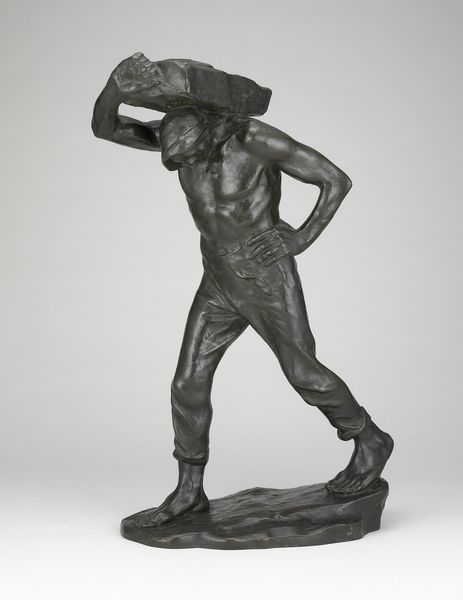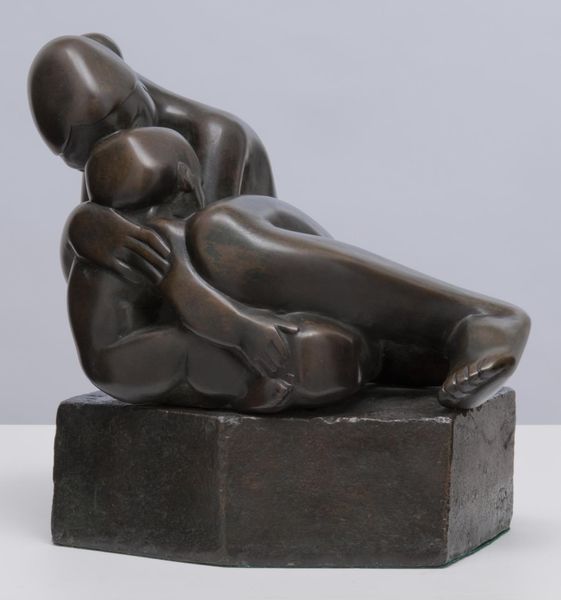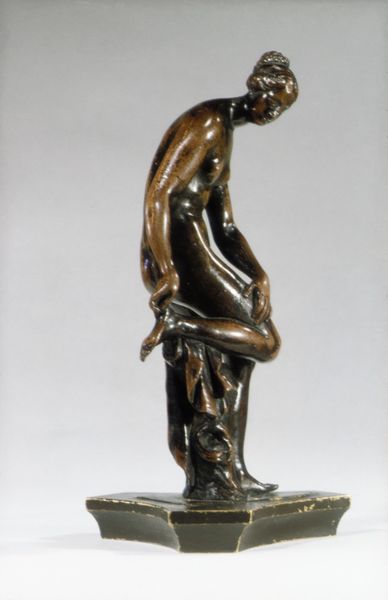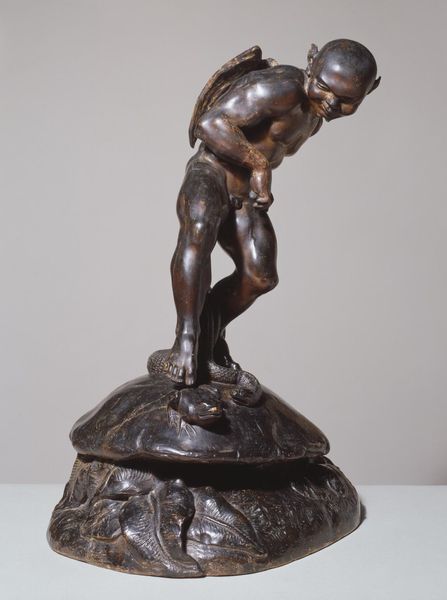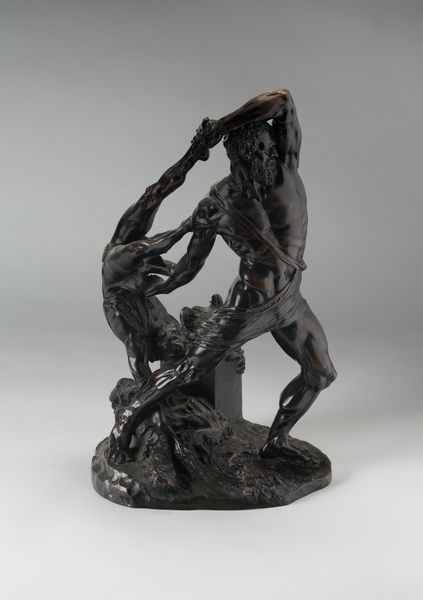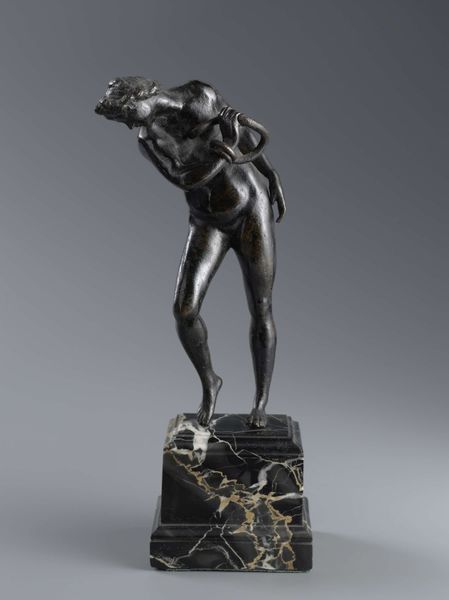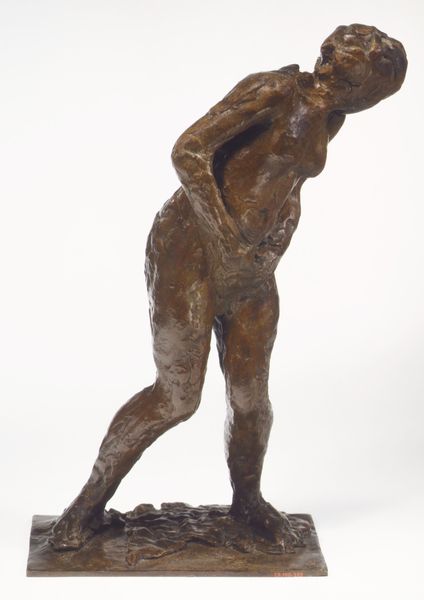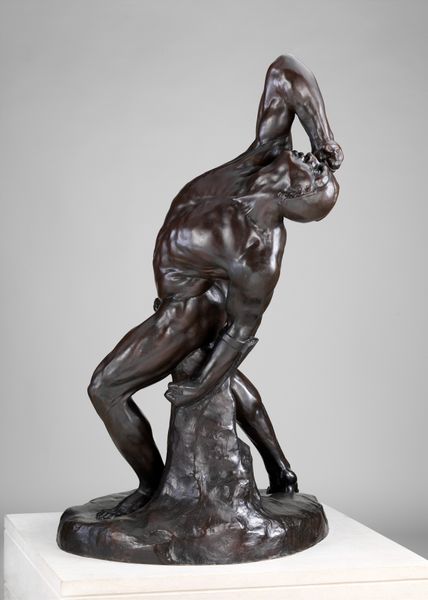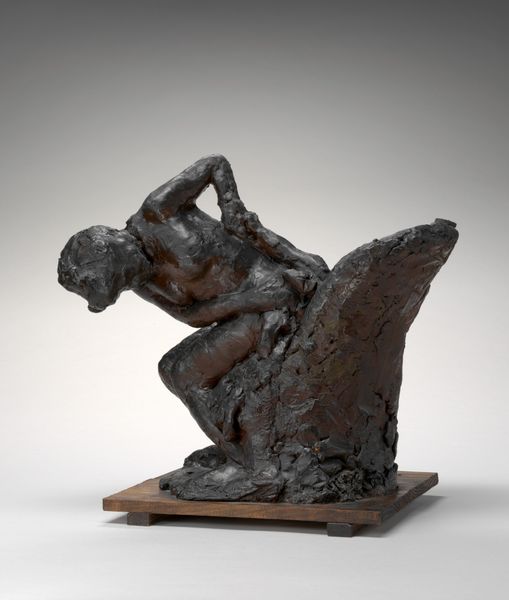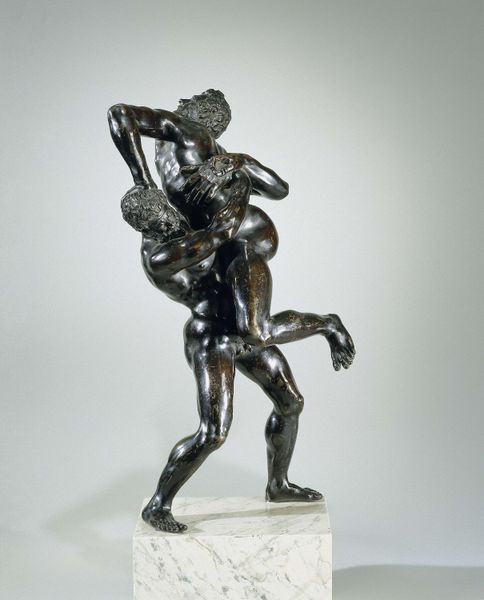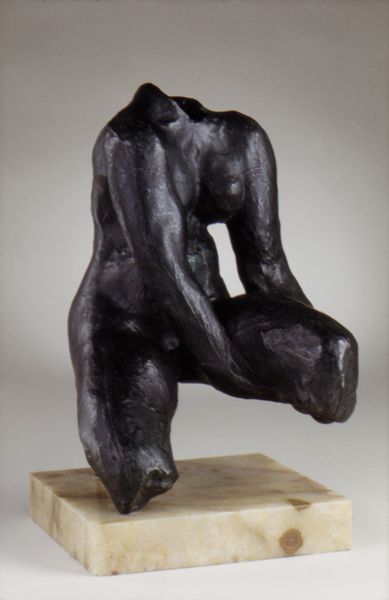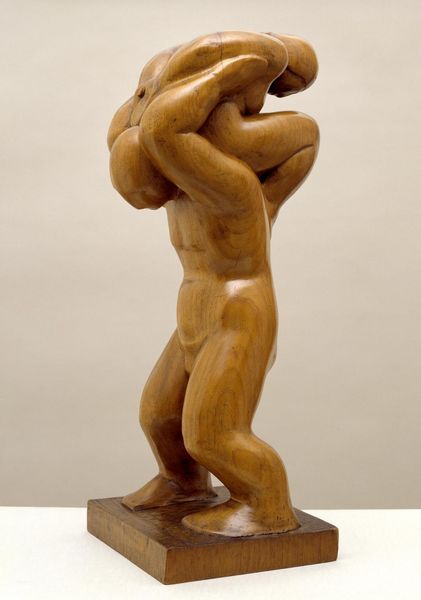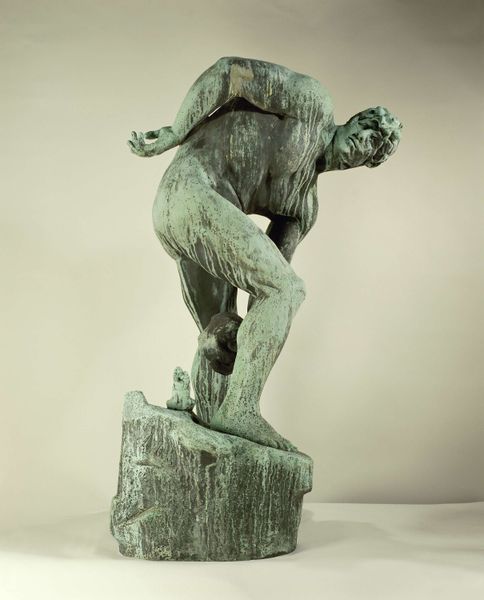
Dimensions: object: 1175 x 876 x 368 mm
Copyright: CC-BY-NC-ND 4.0 DEED, Photo: Tate
Curator: Looking at Boccioni's "Unique Forms of Continuity in Space," the bronze seems to undulate, capturing movement itself. It embodies speed and dynamism. Editor: Absolutely, and the way Boccioni, a key figure in the Futurist movement, uses the human form as a vehicle to explore ideas about modernity, industrialization, and the perception of time is fascinating. It speaks to the anxieties and aspirations of a rapidly changing world. Curator: Considering that Boccioni and the Futurists were interested in disrupting traditional artistic values, how does the sculpture's reception reflect the ongoing politics of imagery and the role of art institutions? Editor: Well, the Futurists were actively seeking to challenge the bourgeois taste. I think we can read the sculpture as a rejection of the static, classical forms, but also perhaps a reflection of an idealized masculine figure striding confidently forward. Curator: That's interesting—it is hard not to consider how gender plays a part in this image of forward movement and the societal disruptions the Futurists were advocating. Editor: Indeed, and situating the work in its historical context enriches our understanding of its complexities. Curator: It certainly does, reminding us how art is both a product and a producer of its time. Editor: Precisely. It’s a potent reminder of art’s capacity to challenge, reflect, and shape our understanding of the world.
Comments
tate 6 months ago
⋮
http://www.tate.org.uk/art/artworks/boccioni-unique-forms-of-continuity-in-space-t01589
Join the conversation
Join millions of artists and users on Artera today and experience the ultimate creative platform.
tate 6 months ago
⋮
In the early years of the twentieth century, industrialisation swept across Italy. The futurist movement was founded by writers and artists like Umberto Boccioni, who enthused about new inventions such as cars and electricity. In Unique Forms of Continuity in Space, the figure is aerodynamically deformed by speed. Boccioni exaggerated the body’s dynamism so that it embodied the urge towards progress. The sculpture may reflect ideas of the mechanised body that appeared in futurist writings, as well as the ‘superman’ envisaged by the philosopher Friedrich Nietzsche. Gallery label, February 2016
